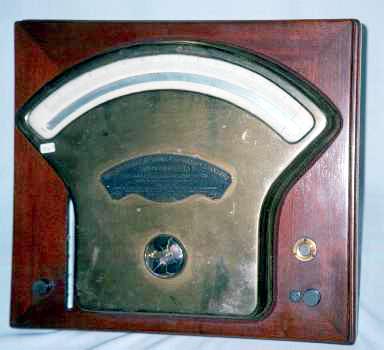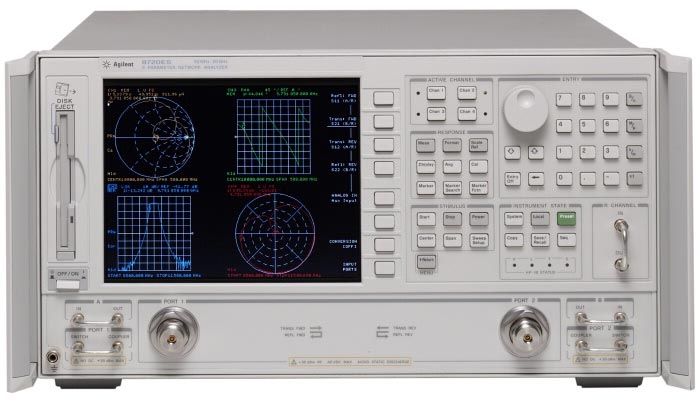I am continually amazed at how the pioneers of electronics, and microwaves in particular, did their research and development with little or no test equipment. How can you design or repair anything without being able to measure key parameters? Yet with little more than basic meters, the early inventors were able to do a great deal. Hertz, Tesla, Marconi, and others actually got by without significant measurements. We can’t do that today.
 |
| Photo owner: physics.kenyon.edu. |
D’Arsonval meters were available even in the 19th century, but these mostly measured DC and later AC with rectification. RF measurements were particularly difficult if not impossible. Frequency and wavelength measurements were made with so-called wavemeters, just a tunable resonant circuit or cavity. Slotted coax and waveguide lines provided another way to measure wavelength. Luckily, someone figured out you could use a diode for mixing and downconversion, thereby permitting measurements at lower frequencies. Despite the lack of real test gear, we were able to get radar, VHF/UHF/microwave radios, and satellites. I have to imagine that there was lots of seat-of-the-pants SWAG-ing going on, but it got done somehow. The early pioneers really had to invent their own measurement solutions along with their main objectives. Or they did not measure at all.
Just out of curiosity, I looked back at some of my early college radio and radar texts by Terman and others to see what they had to say about RF measurements. Not much, as I found out. Even the widely acclaimed World War II era MIT Radiation Lab series of books had little to say about measurements. Remember these books? There were 28 of them and only two that I remember covered measurement of any kind. An early employer of mine had a full set of these books that I would regularly reference. I wish I had a set even today. Lots of good, original theory and practice in there.
We are lucky today to have a wide range of great microwave test gear from multiple vendors. Signal generators, spectrum analyzers, power meters, noise meters, vector network analyzers, vector signal analyzers, and lots of other special instruments. We can even measure weird stuff like PIM. There is very little we cannot measure reliably. Given the massive complexity of modern RF systems and products, we should be thankful we have some measurement tools. Prices are very high, but undoubtedly justified in most cases.

For example, how does one test and evaluate a WiGig 802.11ad product? It uses OFDM on 60 GHz with MIMO and beam steering. 5G cellular will be just as difficult or worse. Good luck with that. Yet, there are a few companies that can provide instruments that will make those measurements. Still, I keep thinking about those researchers working beyond 100 GHz. What do they use? And how does one measure a THz signal, much less generate it?
Anyway, rest assured that there are a few test companies working on the leading edge of microwave, millimeter wave, and THz wave products. It may be a while before we see some of them, but eventually we will be able to use them – if we can afford them.
While our pioneers were able to get by with few if any measurements, we cannot do that today. We cannot design or otherwise deal with the complexity, government regulations, certification requirements, and other factors without precise and rigorous tests. Thank your test equipment vendors who allow you to do your work.
